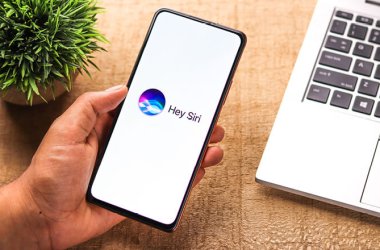 Yesterday, iPhone- and iPad-maker Apple took the wraps off of its latest mobile OS, iOS 5, and the new software reportedly adds more than 200 new features for iPhone, iPod touch and iPad users.
Yesterday, iPhone- and iPad-maker Apple took the wraps off of its latest mobile OS, iOS 5, and the new software reportedly adds more than 200 new features for iPhone, iPod touch and iPad users.
One noteworthy new feature in iOS 5, the iMessage IM application, should seem quite familiar to BlackBerry smartphones users and other gadget geeks, because the new application was clearly influenced by Research In Motion’s (RIM) popular BlackBerry Messenger (BBM) app.
So while Apple and its top brass may not have many positive things to say about RIM today–Apple CEO Steve Jobs blasted RIM and its position in the vastly competitive mobile industry numerous times over the past year or so–the company has directly copied one of the BlackBerry platform’s more unique offerings with iMessage.
In fact, iMessage even steals a number of BBM-specific features like message-received and message-read receipts, notifications when one party is writing a new message and the ability to send unlimited messages without eating up users’ monthly text message allotment.
RIM knows BBM is one of the BlackBerry platform’s true strengths, and in the past it has served as a key competitive differentiator between BlackBerry and RIM’s rival handset and mobile software makers. RIM even focused a number of recent BlackBerry TV commercials on BBM, in a bid to draw attention to the service. And Apple is clearly attempting to convert even more BlackBerry users to iOS users than it already has, by adding a BBM-like app to its mobile OS.
However, at least one very significant difference exists between RIM’s BBM and Apple’s iMessage, and though that disparity may not mean much to the average consumer–at least not until they’re in a situation that highlights the difference–it could certainly be noteworthy to businesses and organisations that may need to rely on BBM for communications in emergency situations.
BBM employs RIM’s unique BlackBerry servers to distribute “PIN” messages between BlackBerry users, circumventing some traditional cell-phone infrastructure, so BBM can be available while other forms of cell communication are down.
RIM’s BlackBerry platform and the associated BBM service received acclaim shortly after the 9/11 terror attacks on NYC in 2001, because BBM and BlackBerry PIN messages were one of the only reliable ways for first-responders and others on scene to communicate after cell service went down. And BBM has since served as the only viable means of communication for many people in emergency situations, including during an 8.8 earthquake in Chile last spring.
Apple’s iMessage app works over 3G and Wi-Fi, but it presumably employs cellular infrastructure alone to transmit messages, since Apple does not employ any sort of specialized iPhone servers, like the ones found in RIM’s Canada-based Network Operations Center (NOC). As such, iMessage won’t likely function in situations where normal cellular calls or text messages aren’t available.
In related news, rumors about RIM bringing BBM to both the iOS and Android platforms hit the Web earlier this year, and though RIM shot down the speculation shortly after it appeared, RIM could potentially steal some of Apple’s iMessage-thunder by releasing a competitive offering for iPhone, that already has a large user base.





